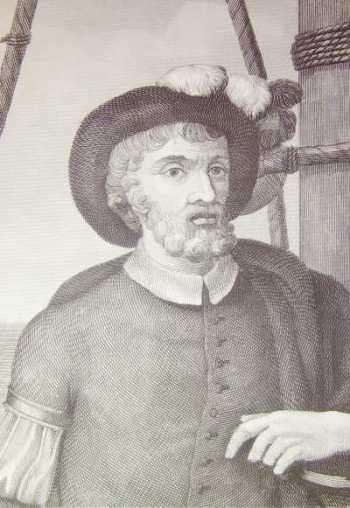Juan Sebastián Elcano - the man
Juan Sebastián Elcano completed the first world circumnavigation in history
When Juan Sebastián Elcano sailed the Nao Victoria into port in Sevilla on 6th September 1522, there were just 17 men with him, all that remained of a 275-man expedition which had set off three years earlier, led by the famous Portuguese navigator, Ferdinand Magellan, in search of a westerly route to the Spice Islands.

Juan Sebastian el Cano - Wikipedia
Magellan himself had been killed in the Philippines, and the other four ships had been lost. Elcano had completed his commander’s goal of reaching the Moluccas in south east Asia, at a time when Portugal was in control of the easterly route to the islands, but when he docked in Sevilla, he also became the first to circumnavigate the globe. It is an achievement often credited to Magellan, who, some historians say, had never set out with that goal.
Elcano’s remarkable achievement was recognised by Carlos I, who had sponsored the 5-ship expedition, with a coat of arms bearing a globe and the motto, ‘PRIMUS CIRCUMDEDISTI ME,’ ‘the first to circumnavigate me’.
Juan Sebastián Elcano was from the Basque Country, and he was born in Guetaria, today in Guipúzcoa province, in 1476. He had sailed with Cardinal Cisneros in the campaign against Algeria in 1509, and had also taken part in the Italian wars with Gonzalo de Córdoba, the Spanish general who was known as the ‘Gran Capitán.’
At the time Carlos I approved Magellan’s proposal to sail westwards to try and find a new route to the Spice Islands – with the express prohibition of entering Portuguese waters - Elcano was based in Sevilla, and had given up his ship to settle a debt. He signed on to the expedition as navigator of the Nao Concepción.
The expedition set sail from 10th August 1519, sailing to Sanlúcar de Barrameda in Cádiz, and leaving from there for the journey across the Atlantic on 27th September 1519. By the time they sighted what is now known as the Strait of Magellan, the commander had put down two mutinies, one of which Elcano was involved in, and his fleet was reduced to four ships after the Santiago was wrecked. The water passage from the Atlantic to the Pacific, right at the tip of mainland South America, was sighted in October 1520, and took 38 days to navigate. One ship deserted and returned to Spain, and the remaining three, the Trinidad, Concepción and Victoria, made it through to the Pacific on 27th November.
Continuing westwards, Magellan’s expedition reached the Philippines in March 1521, the first Europeans to do so, at the end of a four month crossing of the vast Pacific Ocean. The commander was killed in a battle with natives on 27th April 1521, and Elcano took over command, but with the crew now reduced to just 115 men, he decided to burn the Concepción. He set sail for the Moluccas on 1st May 1521 with the Trinidad and the Victoria.
The depleted expedition reached the Spice Islands in early November 1521, and loaded up the ships with the valuable cargo. Now came the journey home. Elcano decided to attempt the return trip by continuing West through Portuguese waters in the Indian Ocean and then around the tip of Africa. The Trinidad was left behind for repairs, to then return East across the Pacific, but was captured by the Portuguese during the crossing and never made it back.
Elcano’s journey westwards kept clear of the coast to avoid the Portuguese, and he rounded the Cape of Good Hope in May 1522, and finally sailed the Victoria into port in Sevilla on 6th September, more than three years from when the ship had first set sail, in the first circumnavigation of the globe in one expedition.
This historic journey was also the first practical proof that the earth was round.
Juan Sebastián Elcano died on a second expedition to the Spice Islands in 1525, whose survivors eventually completed the second circumnavigation of the world. Today, he is remembered by the Spanish Navy training ship which bears his name, a four-masted topsail schooner, the Buque Escuela ‘Juan Sebastián Elcano.’ There is also a statue in his home town, in Getaria.

The Juan Sebastián training yacht
A replica of the Nao Victoria, the ship he sailed home to Spain, was built for the Expo ’92 in Sevilla. It successfully completed its own journey around the world, setting off from Sanlucar de Barrameda on 12th October 2004, and reaching port in Sevilla 18 months later on 4th May 2006.
